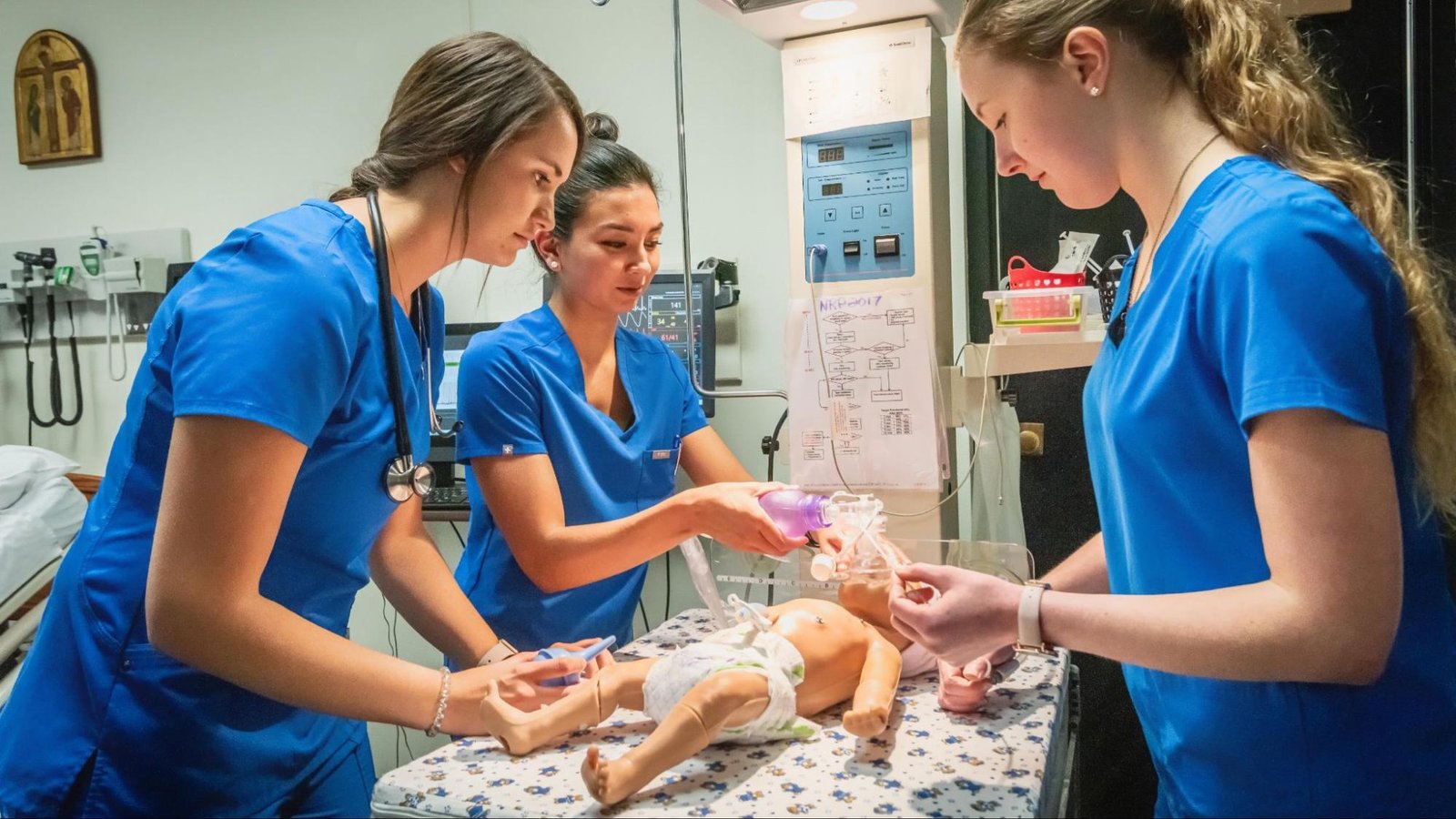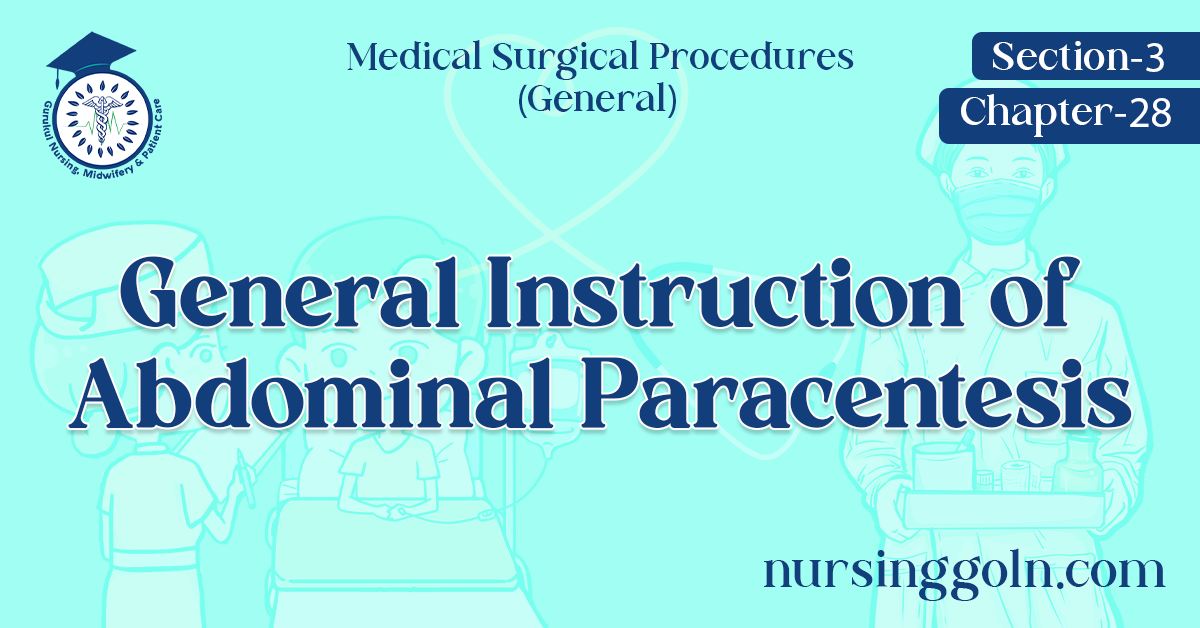Today our topic of discussion is General Instruction of Abdominal Paracentesis.
General Instruction of Abdominal Paracentesis

General Instructions
- Abdominal paracentesis (Fig. 28.1) should be done with strict aseptic technique to prevent introduction of infection into the peritoneal cavity
- Ask the patient to void 5 minutes before the procedure to prevent injury to the bladder Keep the patient warm and comfortable to prevent chills
- Withdrawing fluid should be done slowly and small quantity at a time
- Use a tapping needle or trocar of smaller gauge possible. This will reduce the puncture wound as small as possible and thereby reduce the chance of fluid leaking from the peritoneal cavity after the procedure is over
- The flow of fluid can be controlled by the application of clamps on the tubing
- The nurse should remain with the patient throughout the procedure to observe the patient’s general condition
- The puncture wound should be sealed immediately after the procedure to prevent infection and leakage of peritoneal fluid
- The specimens collected should be sent to the laboratory without delay.
Routine Investigations
- Specific gravity, cell count, bacterial count, protein concentrations, culture and acid test strain
- In most disorders, the fluid is clear and straw colored. Turbidity suggests infection
- Sanguineous fluid usually signals neoplasm or tuberculosis
- A protein concentration less than 3 g/100 mL suggests liver diseases or systemic disorders
- Higher protein content suggests an exudates cause such as tumor or an infection.

Preliminary Assessment (Figs. 28.2A to D)
- Check
- The doctors order for any specific precautions
- The general condition and diagnosis of the patient
- Self-care ability of the patient
- Condition of the abdomen
- Articles available in the unit.
Preparation of the Patient and Environment
- Explain the procedure to the patient and his relatives
- Obtain a written consent from the patient or relatives
- Prepare the skin as for a surgical procedure
- Empty the bladder just before the procedure
- Maintain privacy with screens
- Protect the bedding with a mackintosh and towel
- Arrange the article at the bedside.
Site and Position
- Premeditation: Inj. atropine sulfate 0.65 mg, intra- muscularly half an hour procedure is given to the patient
- Selecting a site: The primary object of selecting a site is to avoid injury to the urinary bladder and other abdominal organs. In the flank at midpoint below anterior superior iliac spine and umbilicus
- Position: The patient is positioned in Fowler’s position supported by back rest and pillow near the edge o the bed.

Equipment
- An unsterile tray containing:
- Mackintosh and towel
- Sterile gloves and masks
- Tincture iodine, spirit and tincture benzoin
- Novocaine 1-2%/xylocaine 2%.
- Adhesive tape and scissors
- Kidney basins, pint measure, bucket
- IV Bottles, back rest and abdominal binder
- A sterile tray containing:
- Sponge holding forceps .
- Window towel, small bowels: 2, sponge
- Swabs, cotton and 2 ml syringe
- Subcutaneous needle
- Scalpel blade
- Trocar and cannula (Thompson’s ascites brocar and cannula) .
- Suture materials: Suture and skin needles, suture scissors, tissue forceps and artery forceps.
Read more:
